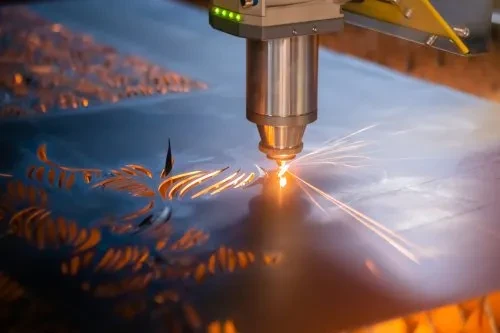E-posta biçimi hatası
emailCannotEmpty
emailDoesExist
pwdLetterLimtTip
inconsistentPwd
pwdLetterLimtTip
inconsistentPwd

Haberler
Detection Method of Positioning Accuracy of CNC Lathe
As an advanced processing equipment, CNC lathe can bring huge economic and social benefits in practical application. In CNC lathe processing, the precision control of product quality is very critical, especially the application of automation technology, which has more prominent advantages than traditional processing technology, and puts forward new requirements for CNC lathe processing accuracy in the new era.
How should the positioning accuracy of CNC lathes be detected? Without further ado, let's take a look!

Linear motion positioning accuracy detection
The positioning accuracy of linear motion is generally carried out under no-load conditions of the machine tool and worktable. According to the national standards and the regulations of the International Organization for Standardization (ISO standard), the detection of CNC machine tools should be based on laser measurement. In the absence of a laser interferometer, a standard scale can also be used for comparison measurements with an optical reading microscope for ordinary users. However, the accuracy of the measuring instrument must be 1 to 2 grades higher than the accuracy of the measurement. In order to reflect all the errors in multiple positioning, the ISO standard stipulates that each positioning point calculates the average value and dispersion difference according to the five measurement data, and the dispersion difference band of the positioning point is formed by the dispersion difference band.
Linear motion repeat positioning accuracy detection
The instruments used for testing are the same as those used for testing positioning accuracy. The general detection method is to measure at any three positions close to the midpoint and both ends of each coordinate stroke, each position is positioned with rapid movement, and the positioning is repeated 7 times under the same conditions, the value of the stop position is measured, and the maximum difference between the readings is obtained. . One-half of the largest difference in the three positions is attached with a positive and negative sign, as the repeated positioning accuracy of the coordinate, which is the most basic index reflecting the stability of the axis motion accuracy.
Origin return accuracy detection of linear motion
The origin return accuracy is essentially the repeated positioning accuracy of a special point on the coordinate axis, so its detection method is completely the same as the repeated positioning accuracy.
Reverse error detection of linear motion
The reverse error of linear motion, also known as loss of momentum, includes the reverse dead zone of the drive parts (such as servo motors, servo hydraulic motors and stepper motors) on the feed transmission chain of the coordinate axis, and the mechanical motion transmission pair The comprehensive reflection of errors such as backlash and elastic deformation. The larger the error, the lower the positioning accuracy and repeated positioning accuracy. The detection method of the reverse error is to move a distance in the forward or reverse direction in advance within the stroke of the measured coordinate axis and use this stop position as the reference, and then give a certain movement command value in the same direction to move it for a certain distance. Then move the same distance in the opposite direction, and measure the difference between the stop position and the reference position. Perform multiple measurements (usually 7 times) at three positions near the midpoint and both ends of the stroke, obtain the average value of each position, and take the maximum value of the obtained average value as the reverse error value.
Conclusion
For more information about cnc heavy duty lathe,dual spindle cnc lathe,cnc lathe with live tooling, we are glad to answer for you.

